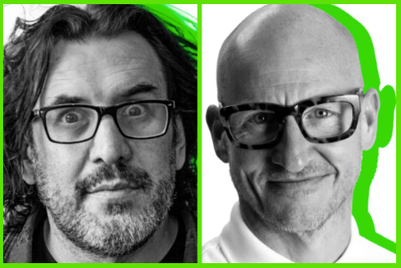
Our industry is littered with lazy stereotypes. From creatives being delicate divas who need to be wrapped in cotton wool and protected from the outside world to account management being the only department trusted to turn up to a meeting on time.
Now, I’m not suggesting that some of these stereotypes aren’t born of elements of truth (we’ve all worked with some of the above), but the stereotype that annoys me most is that, as strategists, we’re seen as the "brainiest people in the room".
I appreciate that this may sound like a compliment and indeed a strange thing to get that het up about, but it points to a broader issue I have with the expectation of strategy as a discipline: the expectation that the role of strategy is to simply be the brains behind the science of marketing communications.
Of course, this is true to an extent. We’re expected to provide the rigour that informs strategic direction, the ability to get under the skin of a business problem and the deep understanding of the human psyche.
But I believe this is just one-half of our job. Strategy is both an art and a science, and expecting strategy to provide just the "science" means we’re neglecting the "art". This may be good enough for the tech giants in Silicon Valley or indeed the consultancies, but I’m a firm believer that what differentiates our industry to others is the "art", and we can’t lose sight of this. And, because of this, our role as strategists goes beyond being the ones who intellectually "inform" the creative process – we have to be the ones who "inspire" creativity too.
I started my new role as chief strategy officer at Engine Creative back in March (at the height of lockdown, but that’s another article) and my ambition has been to re-establish strategy as both an art and a science within the agency.
That’s why I’ve made the role of every strategist in the team to be "the first creative eyes on every brief".
What does this mean?
I’m not suggesting we’re all suddenly doing the jobs of copywriters, art directors and designers. But what I am suggesting is that the application of strategy is creative by nature. More often than not, there is more than one strategy to solve a single problem, so "buying into" a single strategy can be an (educated) leap of faith in itself. Writing a strategic hypothesis could be seen as "sticking your neck out" and strategy can be argued for or against. That’s what makes this job so difficult yet so rewarding at the same time.
Being "the first creative eyes on every brief" also means that our thinking has to go further than the distillation of a client’s problem or objective. It means we have to bring something new to the table. It means we have to unearth something nobody has seen before or unearth a truth about a product, brand or consumer that is completely unexpected or original. The dictionary definition of "creativity" is "original thinking", after all.
Being "the first creative eyes on every brief" means that it’s the expectation of every strategist, no matter their background or expertise, to think differently and find a unique or new way of looking at the problem we’re trying to solve before we’ve briefed creative teams. I believe that when a strategist gives a creative team a lateral "leap" in thinking at point of brief, it gives that team a far greater chance to come up with a completely new or unexpected creative idea. Strategy and creative combining in this way is not simply additive, but has a multiplier effect.
Finally, being "the first creative eyes on every brief" means that it’s important to remind ourselves that strategy is a means to an end, it is not the end. The creative output is the product that clients want to buy from us and, unless our thinking is delivering something new, fresh or original to the work, I don’t believe we’re doing our jobs properly. It’s so important we don’t lose sight of this.
My ask is that, as strategists, we keep reminding ourselves of the creative role that strategy plays in the creative process. Let’s not lose sight of the fact that strategy is not the precursor to creativity, but it’s where the creative thinking begins.
Gen Kobayashi is chief strategy officer at Engine Creative


.jpg&h=334&w=500&q=100&v=20250320&c=1)


.png&h=334&w=500&q=100&v=20250320&c=1)




.png&h=334&w=500&q=100&v=20250320&c=1)





.png&h=268&w=401&q=100&v=20250320&c=1)


